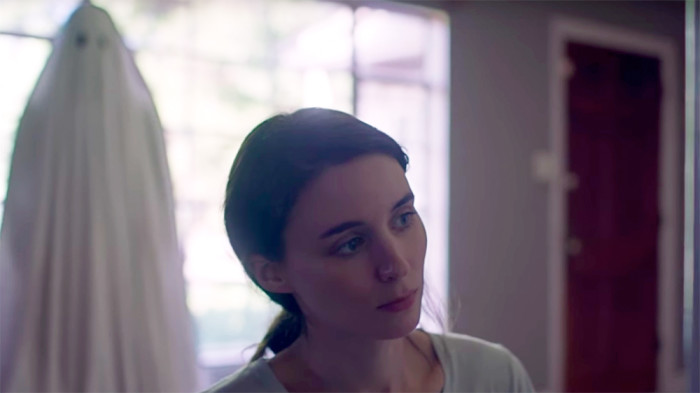'A Ghost Story' Ending Explained By Director David Lowery
This past weekend, A Ghost Story joined the specialty box office line-up by hitting theaters in New York in Los Angeles before the Sundance selected drama from Ain't Them Bodies Saints and Pete's Dragon director David Lowery expands in the coming weeks. Having caught the film at Sundance, I can say you haven't seen a movie quite like this before. However, the title might be a little misleading for those expecting a ghost story that's more horror than thoughtful drama. Furthermore, the ending may leave many perplexed as the scope of the narrative expands and becomes something bigger than you'd expect.
Thankfully, director David Lowery was asked about the ending to A Ghost Story, and he was happy to provide a little more explanation for those who might be confused when the credits start to roll. If you haven't see A Ghost Story yet, don't read any further because there are spoilers abound, and you really should wait for clarification until after you've seen it for yourself, even if that doesn't happen until it's available on home video.
A Ghost Story Ending Explained
Nearly the entire film follows Casey Affleck under a sheet as the ghost himself, having died in a car crash just outside of his house. After waking up as a ghost in the hospital and returning to his home, he stays behind long after his wife (Rooney Mara) has left the house, witnessing other families and people moving in and out over the years. He sticks around so long that the house is even torn down and eventually turned into a high-rise building sometime in the future. Eventually, he's had it with sticking around this place for so long, so he jumps off the building, seemingly killing himself again.
Instead, the ghost finds himself far in the past, when the early settlers were first establishing themselves in the area, living on the land that would eventually become a suburb. He remains there until he finds himself back in the house that he and his wife called home. Eventually, he ends up in the house at the same time that the earlier ghost version of himself was in there. This isn't the end of the film just yet, but David Lowery explains to The Hollywood Reporter exactly what this scene means:
"One version is the naïve ghost that still hasn't figured out what he needs to be doing, and the other that's sitting at the piano is the version that's achieved some sort of clarity."
This advancement of the story actually came about organically on set. Lowery explains, "That was a spontaneous day on set that ended up being a very definitive and profound visual, and we could have kept it going!" By that he means the story could continue and eventually the ghost could loop back to himself over and over again. But in this case, this moment served as a good bookend to end the story, as Lowery adds, "When we saw it on camera that day, we thought it really brought the movie home in a significant fashion."
Following this scene, the ghost eventually relives the moment when his wife leaves the house, giving him a chance to retrieve a little note that Rooney Mara's character leaves in the crack of a wood door frame that he couldn't get ahold of for a large chunk of the time he previously spent in the house. When he finally gets the note and reads it to himself, he disappears, freeing himself from the time loop.
What Does the Piece of Paper Say?
The famous piece of paper that captivates Casey Affleck's ghost is destined to be a piece of cinema akin to the whisper from Bill Murray to Scarlett Johansson in Lost in Translation. What's written on the paper isn't shown to the audience, so it's left a mystery. Lowery believes that it's not as important as the fact that he finally got to read it:
"We thought about whether or not we should show it, but it doesn't matter as much as just knowing that he got it. Nothing written there would mean anything to the audience at that point, and it would just complicate that moment — you'd see something, process it, and then wonder what it means."
But that doesn't mean the paper was blank. On set that day, Lowery explains that the script didn't dictate what was written on the paper, mostly because he didn't even know what it should say, so he asked Rooney Mara to write something that "felt personal and meaningful to her, the movie and her character."
What she wrote on that paper remained in the house up until it was actually demolished for the movie, and no one got to read it before then. For Mara's part, she says she doesn't remember what it says, and even if she did, she likely wouldn't say. Not even Casey Affleck knows because the piece of paper used for when he retrieves it was a completely different piece.
Honestly, what's most compelling about A Ghost Story is everything surrounding this little MacGuffin. In the end, it's everything surrounding the note that becomes more important than what the note actually says. We're just glad that the piece of paper didn't say "The End," as if it were a college student film.

